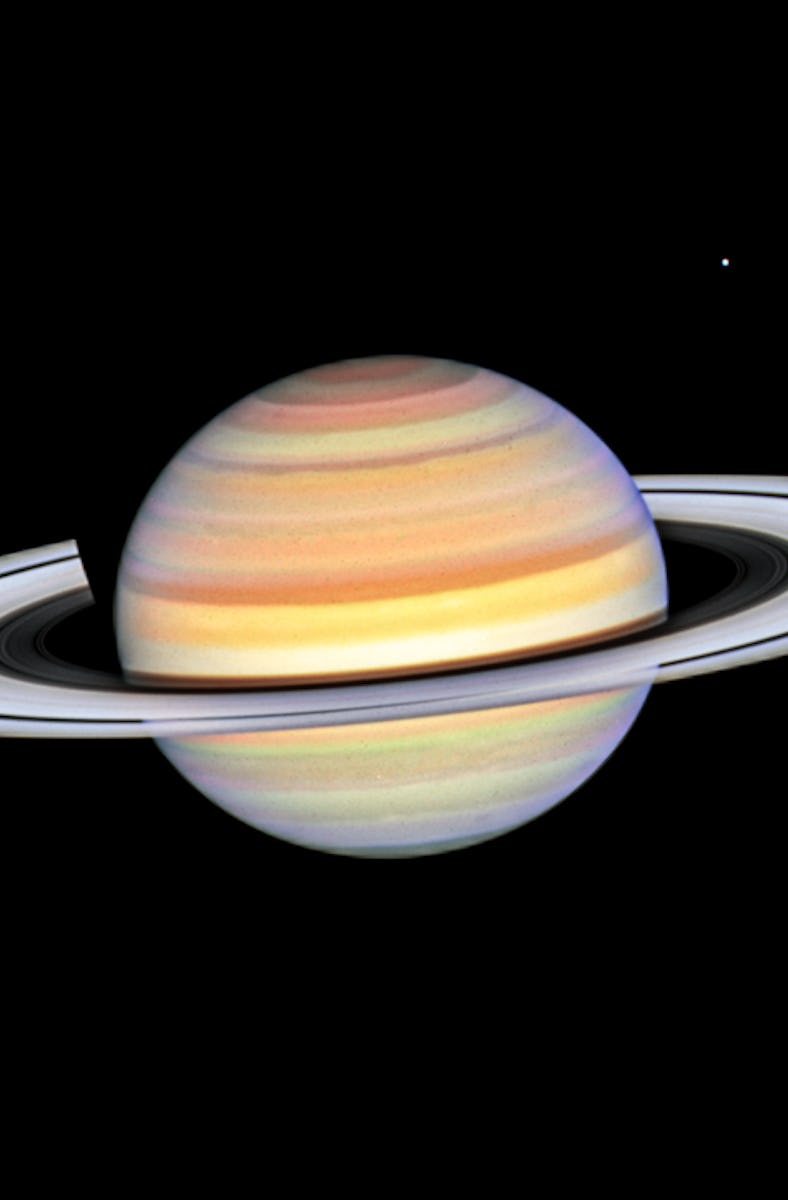A Ring-Tastic Hubble Image Ushers In Spoke Season For Saturn
Look up! It’s spoke season!

Saturn is a lot like Santa: They’ll both deliver an exciting gift during a special season, but their logistics are a puzzle.
More than four decades ago, astronomers beheld the first photos of Saturn. When they peered at these images from NASA’s Voyager 2 spacecraft, they noticed fuzzy stripes radiating outwards along the planet’s famous rings. They look like spoke-shaped stains. Since then, astronomers have seen the spokes time and time again. Their visual contrasts vary, as do their numbers. Plus, they don’t show up consistently. But, they’re abundant now. NASA and the European Space Agency (ESA) published a new image of these spokes on Thursday, because ‘tis the season.
Both agencies collaborate on the famous Hubble Space Telescope. The 33-year old observatory snapped the latest look at the planet and NASA and ESA accompanied it with an annotated image and a video.
A time-lapse video of Saturn’s spokes. Imagery was captured by the Hubble Space Telescope on October 22, 2023.
Hubble On The Shelf
Voyager 2 made a single visit to Saturn, flying past in 1981 and never to return. But Hubble is parked in space, watching, among many things, the giant planets as part of the Outer Planets Atmospheres Legacy (OPAL) program from an altitude of roughly 326 miles above Earth’s surface.
Hubble watches Saturn every year. It snaps pictures of Saturn again and again, downlinking clues that astronomers are using to find possible explanations for the spokes.
They have a few pieces of the puzzle so far. They know the spokes are short-lived, like water marks that evaporate with a little time. The spokes orbit Saturn, but after about three or so rotations, they disappear. Many more appear, however, continuing the pattern.
They look like decorations of a twirling dancer’s skirt, but the science behind these features may be less flouncy. Astronomers’ best guesses right now are that the spokes come from a strong interaction between charged particles ejected from the Sun and Saturn’s powerful magnetic field.
‘Tis the Season
Saturn and Earth have seasons, because the planets are typically tilted towards or away from the Sun at any given moment.
Saturn is approaching equinox, when the planet is fairly level. Astronomers noticed that this is when spokes seem to make their most vivid appearance.
When a person confronts a strong wind, one successful impulse is to crouch and brace. Saturn is often tilted at an angle, so the charged solar wind blasting towards it doesn’t strike head-on. Now, however, Saturn is like a person with arms on their side, willing to face the blast bare. Without a tilt, Saturn at equinox might be more vulnerable to the solar wind, and the charged particle sea can interact more strongly with Saturn’s magnetic field. It’s possible that this mingling causes an electrostatic force that levitates ice and dust for a few rotations around Saturn, creating the spokes that Hubble saw on October 22 from roughly 850 million miles away.
However Saturn makes the spokes, they’re a great gift for any astronomy enthusiast enthralled by our dynamic universe.